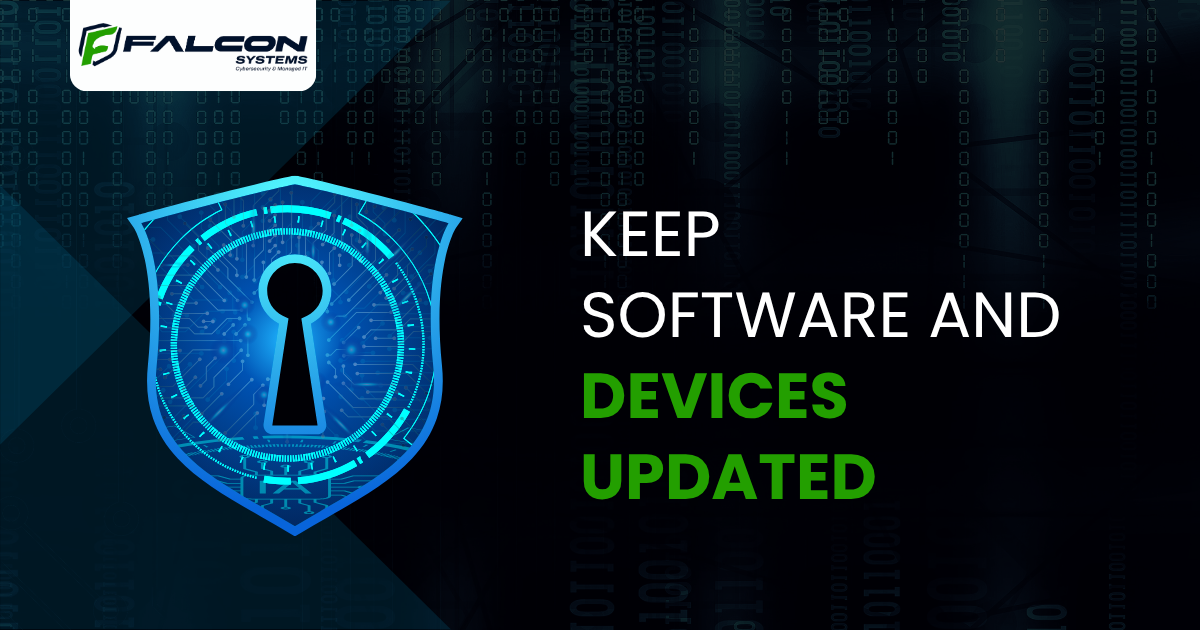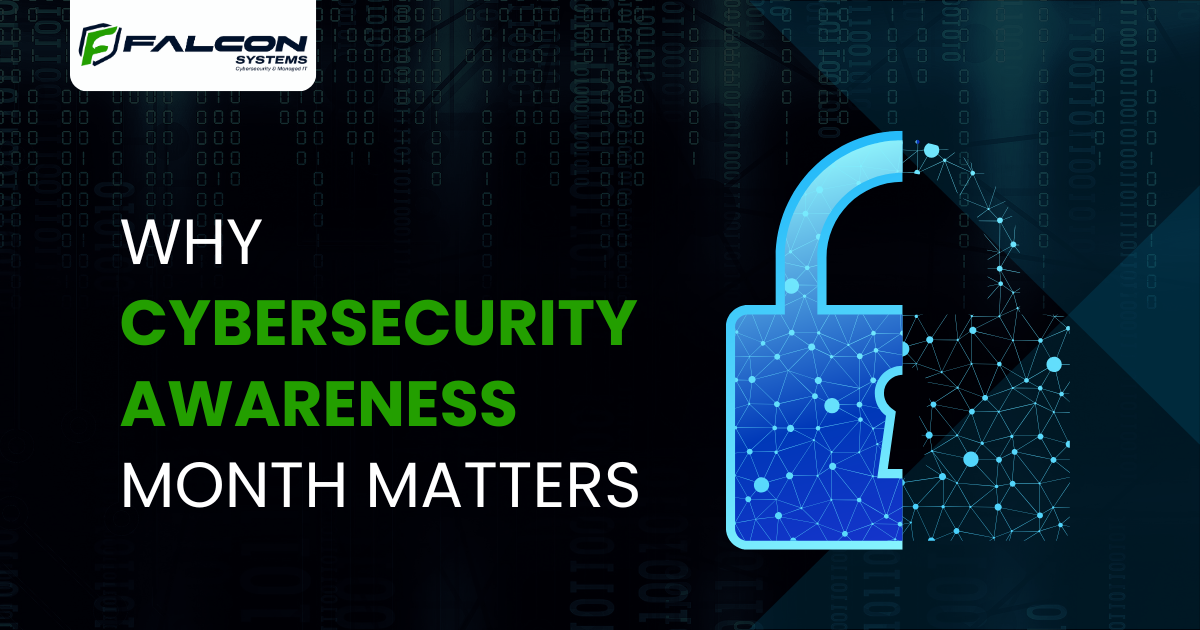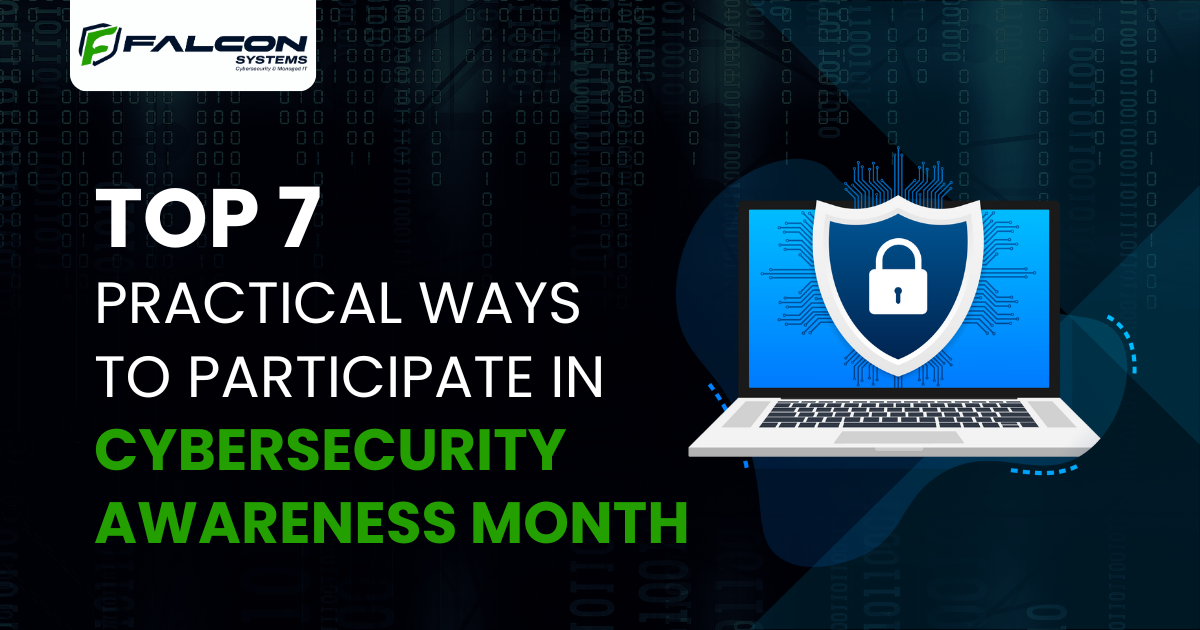Cybersecurity threats are growing every day, and most of them start with simple mistakes people make online. Whether you’re a business leader, employee, or everyday internet user, knowing how to stay safe online matters. That’s why Cybersecurity Awareness Month exists: to remind everyone that protecting data and privacy starts with awareness.
This annual event is not just a reminder; it’s a movement that helps people learn, share, and practice better online habits. You don’t need to be a tech expert to take part. With the right mindset and a few small actions, anyone can make a difference in digital safety. In this blog, let’s look at seven practical ways to participate in Cybersecurity Threat Prevention Month and make your online world safer for yourself and those around you.
1. Start with Cybersecurity Training at Work
Most cyber threats begin with human error. A simple click on a fake link or a weak password can open doors to hackers. One of the best ways to take part in Cybersecurity Education Month is by joining or organizing a cybersecurity training session at your workplace. Interactive training helps employees learn how to recognize phishing emails, create strong passwords, and understand the value of data protection.
Use simple real-life examples to make training relatable. Encourage everyone in your office to take short quizzes or challenges about security. The more you talk about cybersecurity, the more mindful people become. Training doesn’t have to be boring; you can use games, case studies, or mini-tests to keep everyone engaged.
2. Review and Update Passwords Regularly
Passwords are your first line of defense. Yet, people often reuse the same passwords for years. That’s like using one key for your house, car, and office, risky and unsafe. During Cybersecurity Education Month, make it a goal to update your passwords. Use a mix of letters, numbers, and symbols. Avoid personal details like birthdays or pet names.
For businesses, encourage employees to use password managers. Password managers can create strong, unique passwords for each account and keep them safe. This simple step reduces the risk of data breaches. Make this a group activity, create a “Password Reset Week” at work. Remind everyone to secure not only work accounts but also personal ones.
3. Share Cybersecurity Awareness Tips on Social Media
Spreading awareness online is one of the easiest ways to join Cybersecurity Awareness Month. Use your social media platforms to share short tips, infographics, or articles about online safety. For example, a post about phishing warning signs, two-factor authentication, or safe browsing habits. Encourage your network to stay cautious about what they share online.
Using hashtags like #CybersecurityAwarenessMonth or #OnlineSafetyMonth helps your posts reach a wider audience. Simple, consistent messaging helps people learn that small actions, like avoiding suspicious links, make a huge impact. Businesses can go further by creating a weekly “Cyber Tip Tuesday” or “Safe Online Friday” campaign. It’s a fun way to teach followers how to protect themselves.
4. Enable Multi-Factor Authentication (MFA)
Passwords alone are not enough anymore. Multi-Factor Authentication adds another layer of protection by requiring extra proof of identity, like a text code or app confirmation. Enabling MFA is one of the best cybersecurity awareness tips experts recommend.
Even if a hacker gets your password, they won’t be able to log in without the second verification step. Make MFA part of your company policy and personal routine. Turn it on for your email, banking, and cloud accounts. If you run a business, remind your clients and employees to enable MFA on all tools and systems. It’s a simple step that could save your data from being stolen.
5. Keep Software and Devices Updated

Outdated software is a goldmine for cybercriminals. Hackers often exploit old versions of apps or operating systems to get access. During Cybersecurity Awareness Month, check all your devices, laptops, phones, routers, and even IoT gadgets, for pending updates. Set them to update automatically whenever possible.
For businesses, schedule regular update checks for all systems. IT teams can send company-wide reminders to ensure everyone’s devices are secure. Staying current with updates also helps patch known vulnerabilities. This habit keeps your system running smoothly while keeping cyber threats at bay.
6. Backup Your Data Frequently
Imagine losing all your work files or customer records because of a ransomware attack. Data loss is one of the most painful experiences, both for individuals and companies. Backing up data regularly is one of the simplest ways to protect yourself. Use both cloud storage and physical backups, like external hard drives.
Make it part of your routine to back up important files weekly or monthly. For businesses, automate the process using secure cloud services. This step isn’t only for Cybersecurity Education Month; it’s a year-round habit. When you have a reliable backup, you can recover quickly from cyber incidents.
7. Encourage Digital Security Awareness in Your Community
Cybersecurity doesn’t stop at the office or home. The internet connects everyone, so awareness must spread beyond your circle. Use digital security awareness campaigns to teach others how to stay safe. This could include school workshops, webinars, or local events. If you own a business, partner with cybersecurity experts like Falcon Systems to organize online safety sessions.
Helping others build secure habits strengthens your brand and your community. Create easy-to-read guides or posters with safety reminders, like “Think Before You Click” or “Use Strong Passwords.” Simple messages like these can make a lasting difference. By sharing your knowledge, you help others stay secure. Awareness is the foundation of prevention.
Why Cybersecurity Awareness Month Matters

The internet makes life easier, but also exposes us to risks. Phishing attacks, ransomware, and data theft are now everyday threats. Cybersecurity Education Month reminds us that every person plays a part in keeping data safe. When you take action, even small steps like updating passwords or turning on MFA, you help create a safer online environment for everyone.
Businesses that take part in awareness initiatives also build trust with their customers. Organizations like Falcon Systems support these efforts by helping companies stay secure with smart, reliable cybersecurity solutions. Their focus on awareness and prevention ensures that both individuals and teams can work safely and confidently.
Conclusion: Start Practicing Awareness Today
Cybersecurity starts with awareness and ends with action. The more we talk about it, the more we learn to protect ourselves. You don’t need technical skills to make a difference. All it takes is care, attention, and simple steps like those shared here. This Cybersecurity Awareness Month, make a personal and professional commitment to better online habits. Update your passwords, enable MFA, and share awareness with others. Stay alert. Stay secure. And remember, cybersecurity is everyone’s responsibility.
Ready to protect your business with expert cybersecurity solutions? Visit Falcon Systems to learn how we can help you stay secure every day.
Frequently Asked Questions
- What is Cybersecurity Education Month?
It’s an annual global event that promotes online safety and helps individuals and organizations learn how to protect their data. - Why should businesses take part in Cybersecurity Education Month?
Participation helps educate teams, reduce risks, and strengthen company-wide security practices through awareness and training. - What are the best cybersecurity awareness tips?
Use strong passwords, enable MFA, avoid suspicious links, keep software updated, and back up data regularly. - How can I promote online safety month at work?
Organize training sessions, post weekly tips, and encourage team members to follow safe digital habits daily. - What is digital security awareness?
It’s understanding online risks and knowing how to prevent them, from securing devices to spotting phishing attempts.

